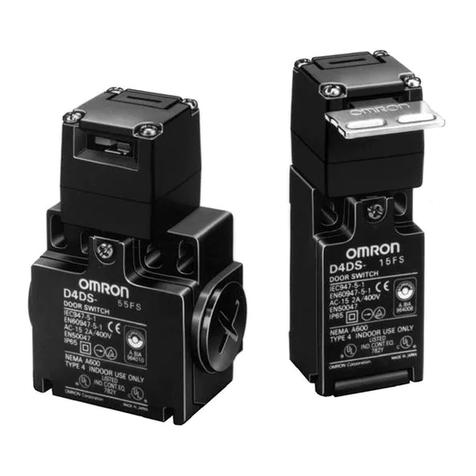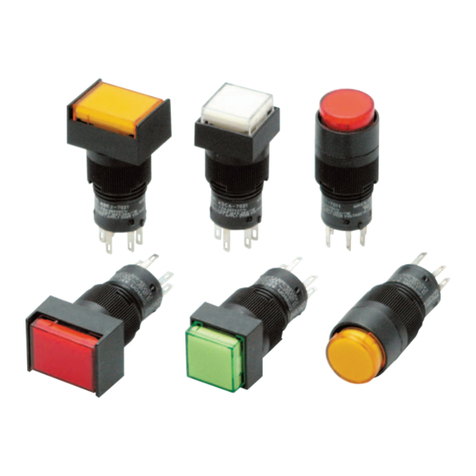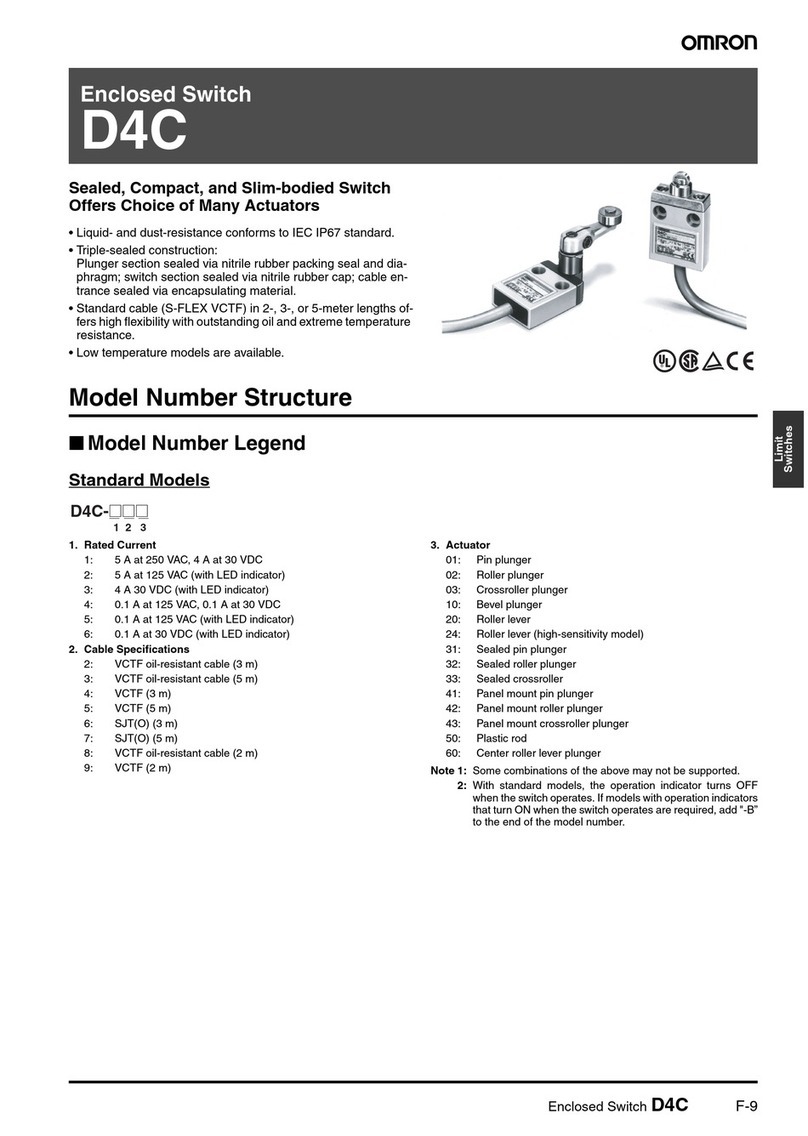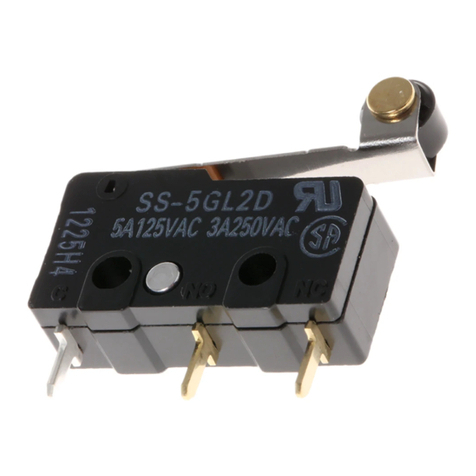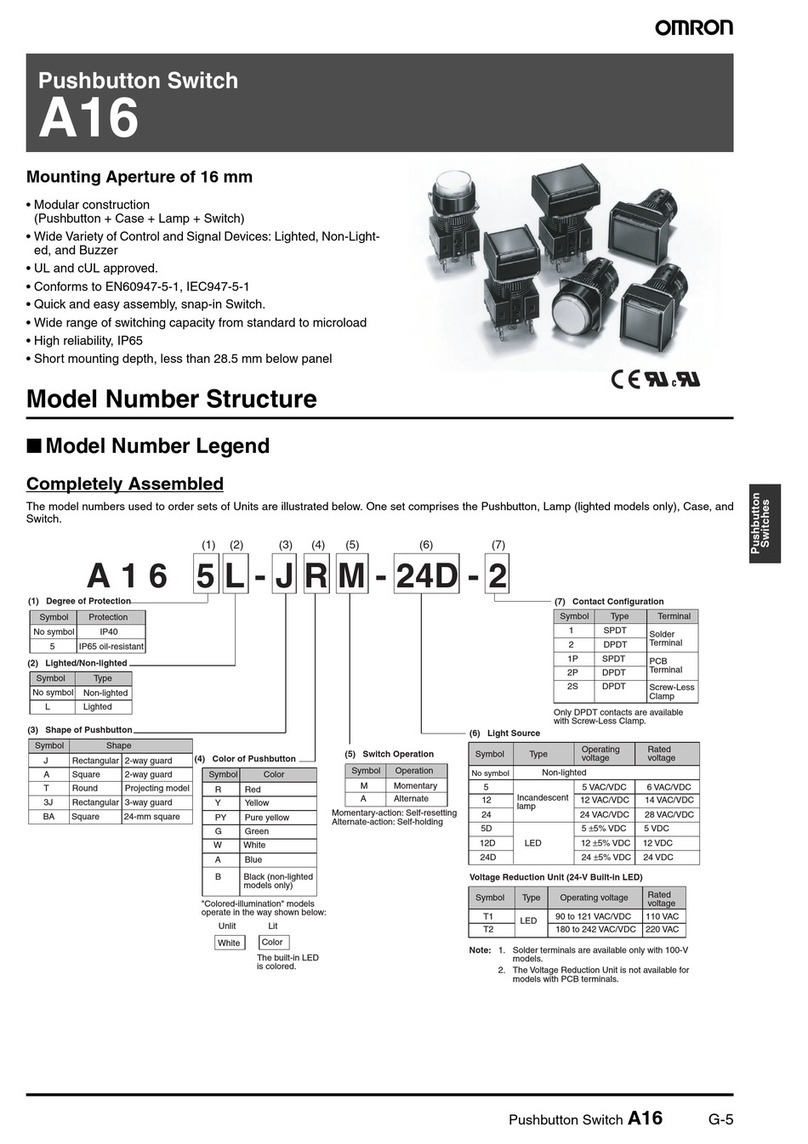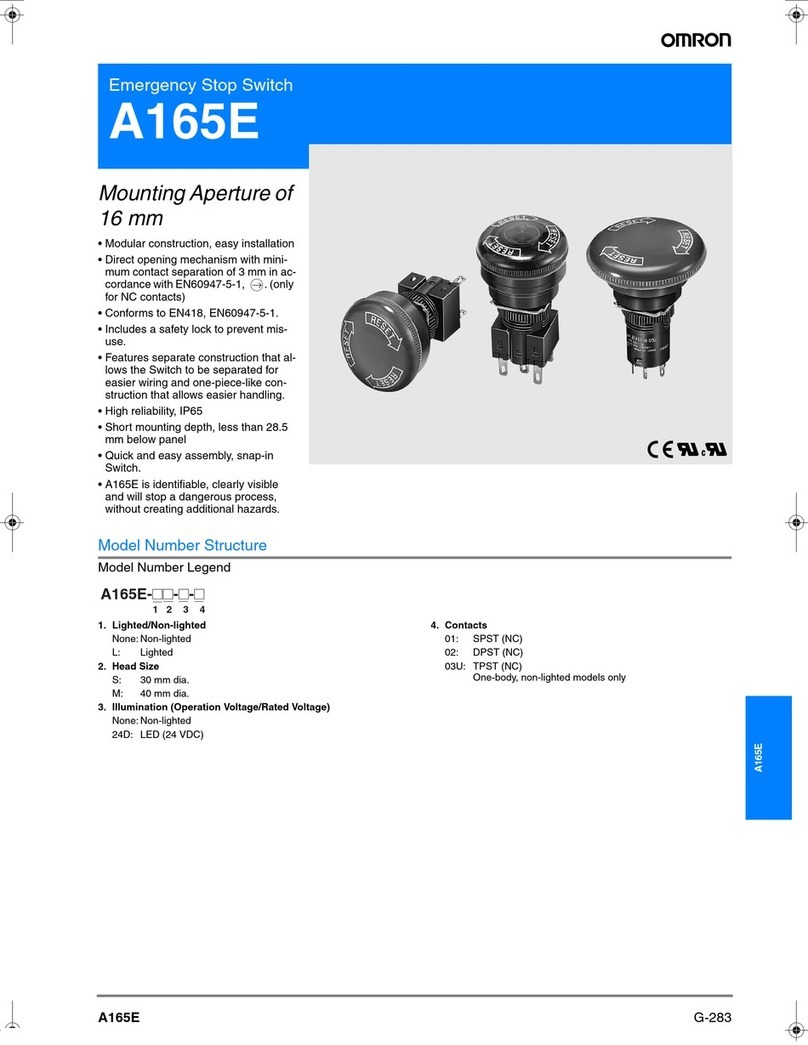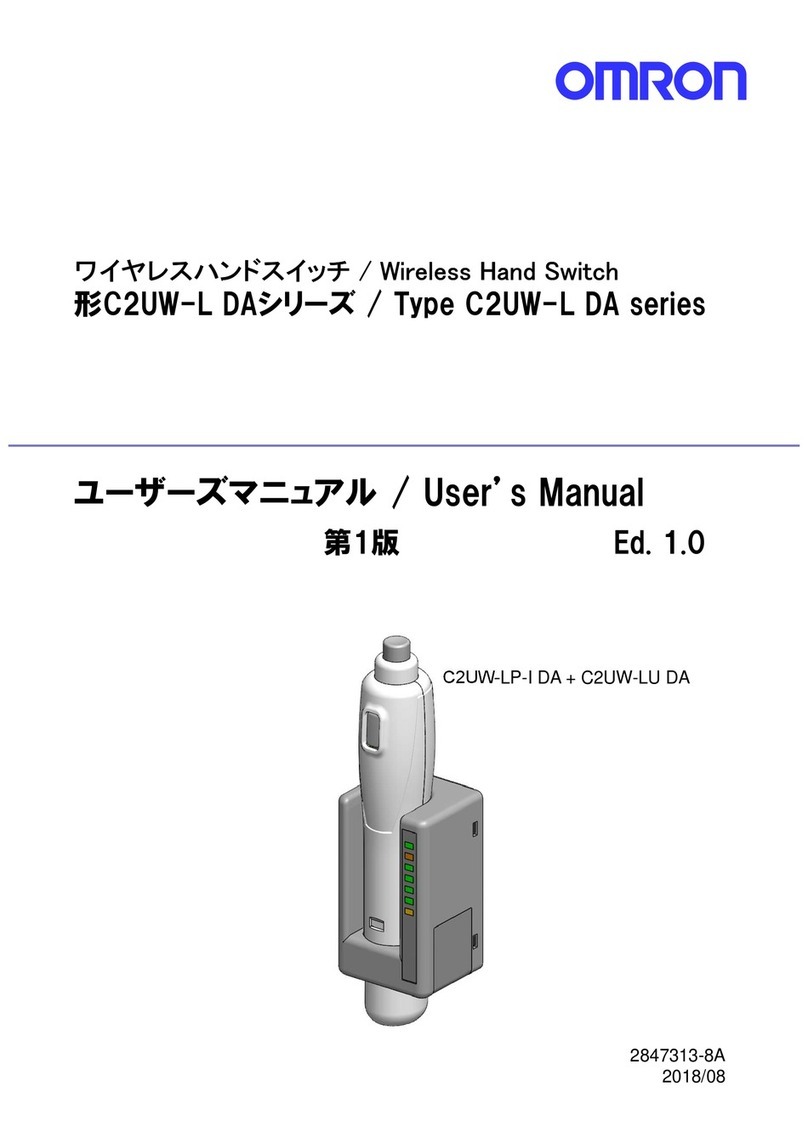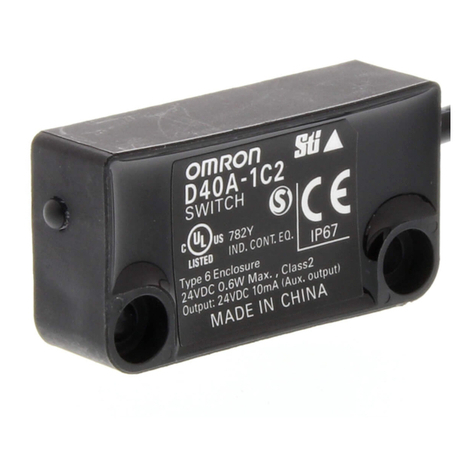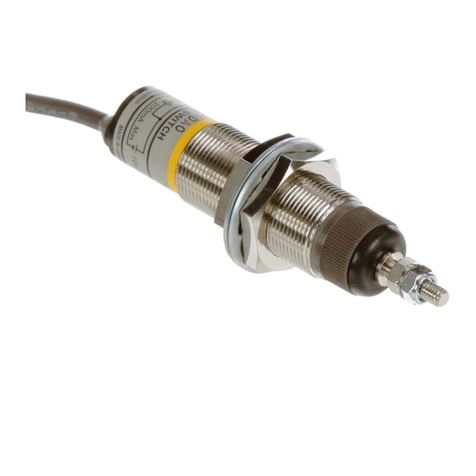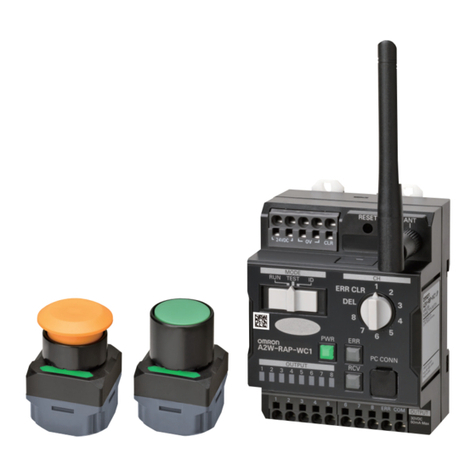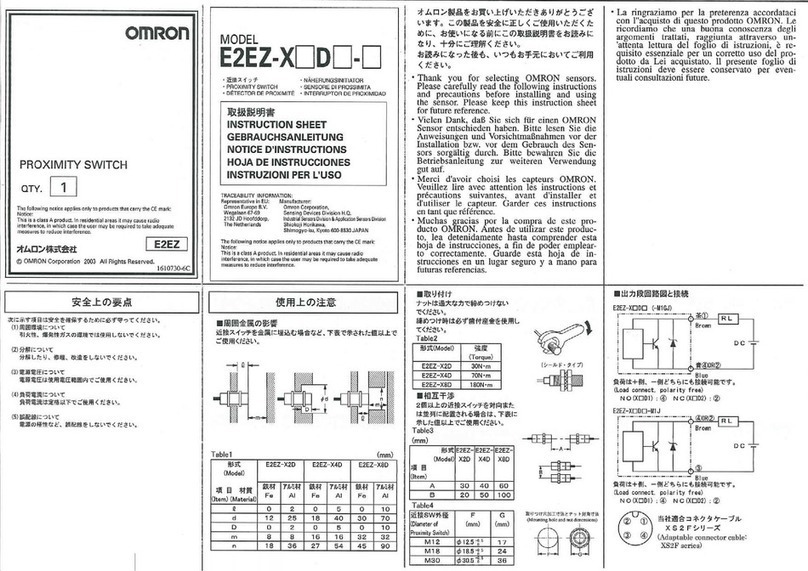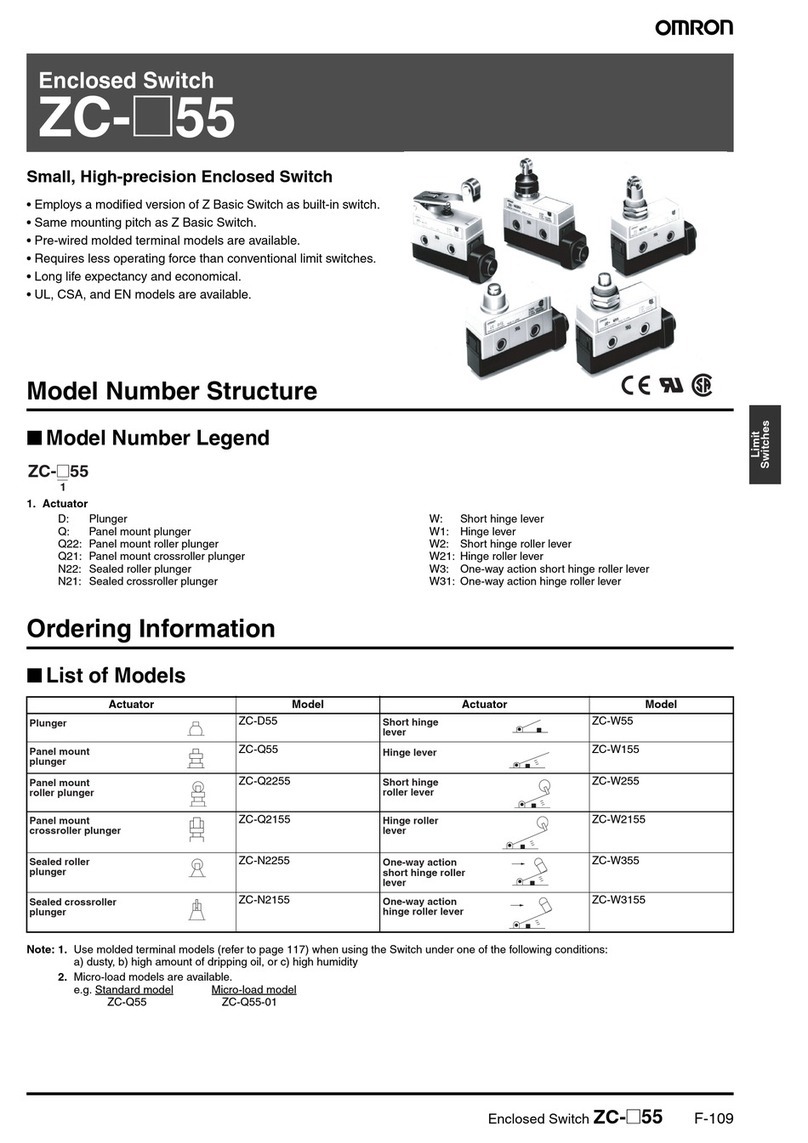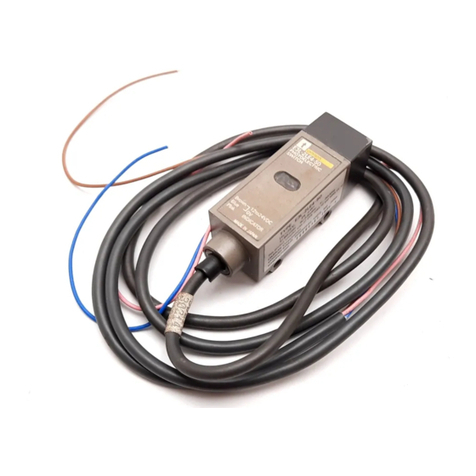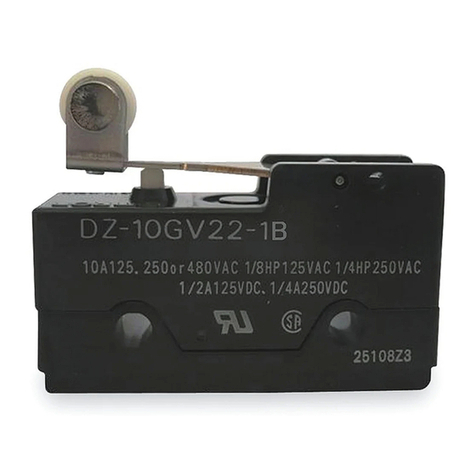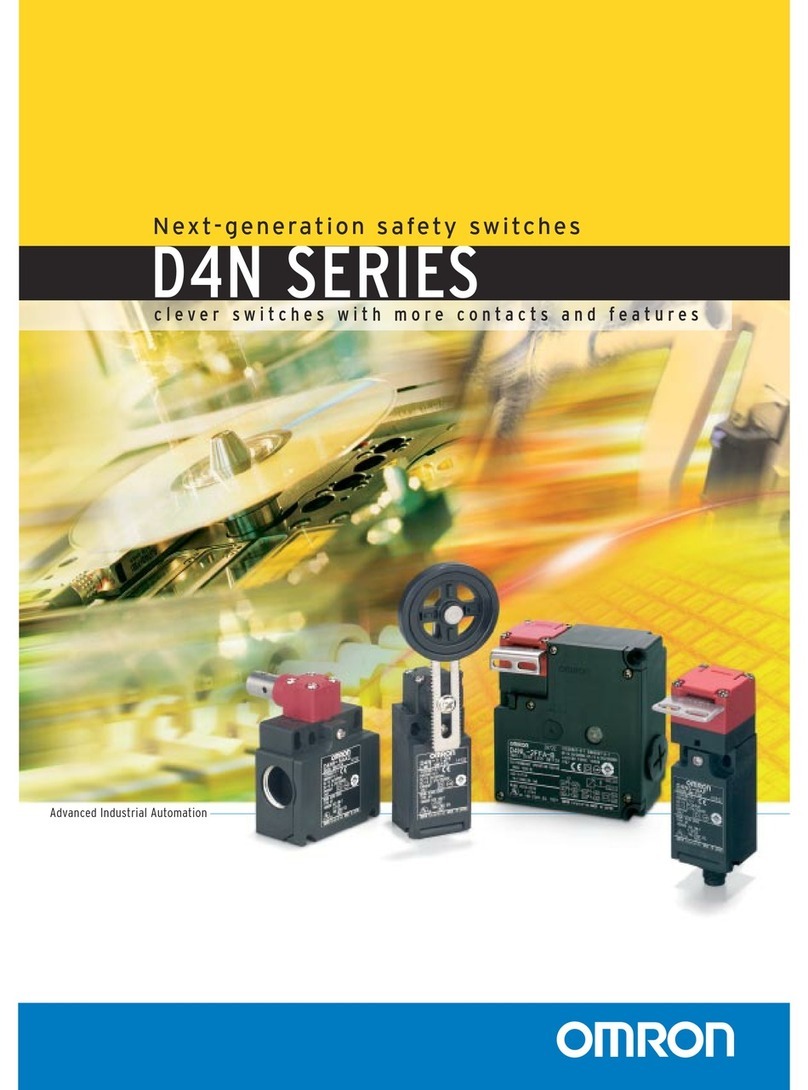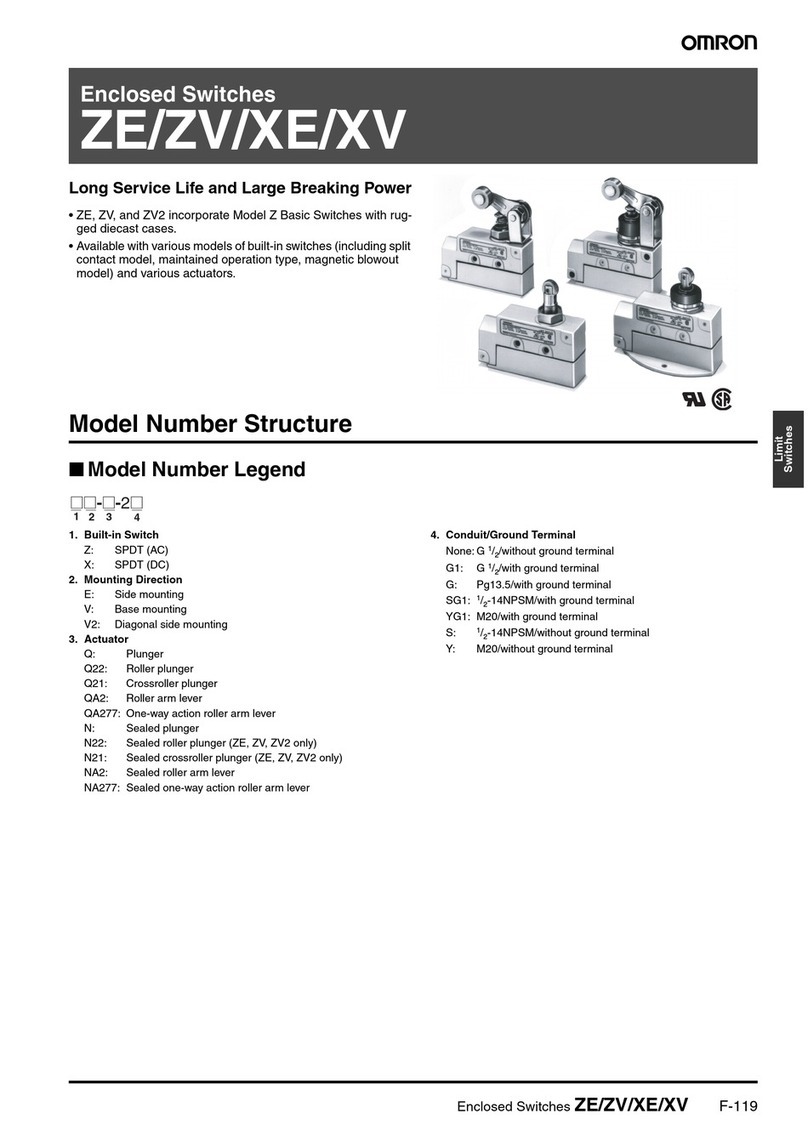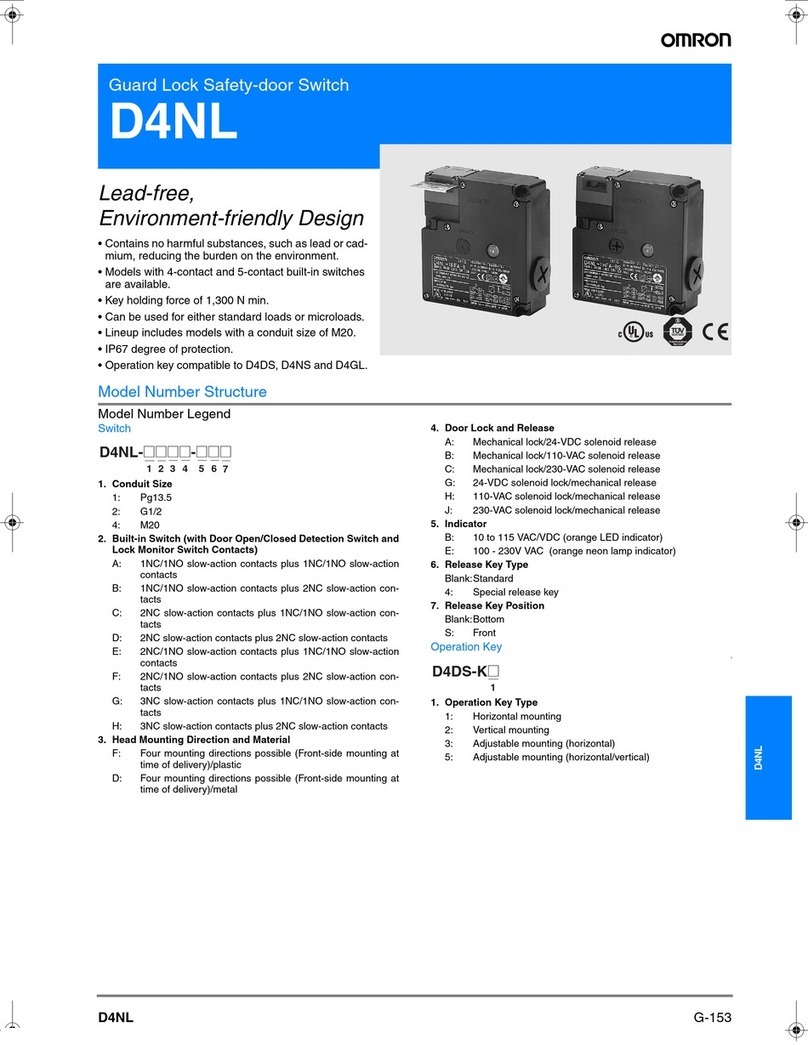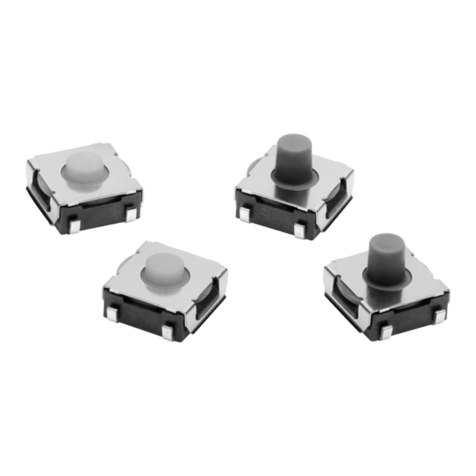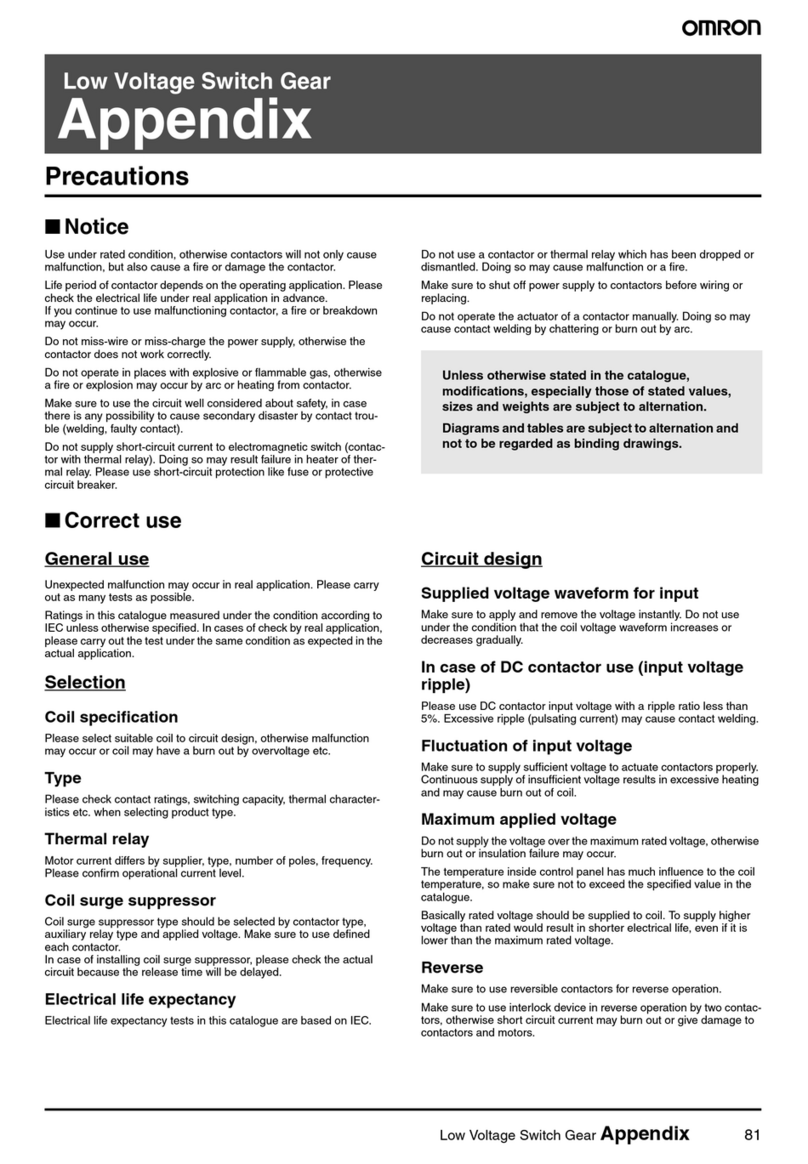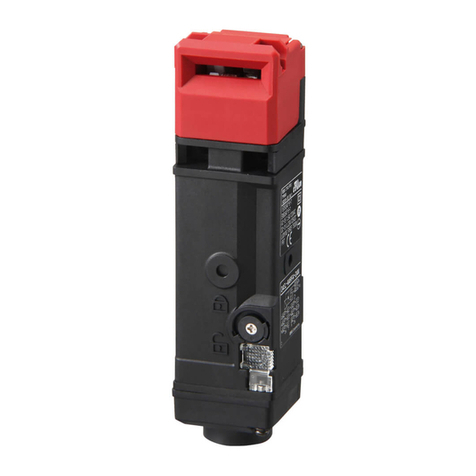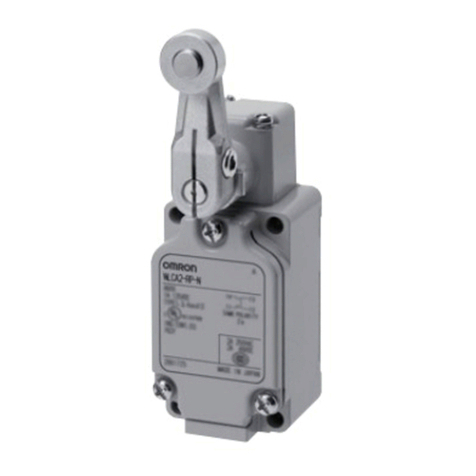
D4DL D4DL
3
Specifications
Approved Standard Ratings
TÜV (EN60947-5-1)
Item LED
type
Neon lamp
type
Utilization category
AC-15 AC-15
Rated operating current (I
e)
6 A 3 A
Rated operating voltage (U
e)1
15 V
250 V
Note:
Use a 10-A fuse type gI or gG as a short-circuit protection device that conforms to IEC269.
UL/CSA (UL508, CSA C22.2 No. 14)
A300
Rated
voltage
Carry current Current (A) Voltage
Make Break Make Break
120 V
AC 10A 60 6 7,200 720
240 V
AC
30 3
Characteristics
Degree
of protection (see note 2)
IP65 (EN60947-5-1)
Life expectancy (see note 3)
Mechanical:
1,000,000 times min.
Electrical:
500,000 times min.
Operating speed
0.05 to 0.5 m/s
Operating frequency
30 operations/minute max.
Rated frequency
50/60 Hz
Positive opening force (see note 4)
58.84 N {6 kgf} min. (EN60947-5-1)
Positive opening travel (see note 4)
10 mm min. (EN60947-5-1)
Holding force
500 N {51 kgf} min. (GS-ET
-19)
Insulation resistance
100 M
Ω
min. (at 500 VDC)
Rated insulation voltage (U
i)
300 V (EN60947-5-1)
Conventional enclosed thermal current
(Ithe)
10 A (EN60947-5-1)
Rated impulse voltage (U
imp)
Between terminals of same or dif
ferent polarity
, each terminal and ground, and each
terminal and non-current-carrying metal part: 4 kV
Between the solenoid and non-current-carrying metal part: 0.8 kV for 24 VDC solenoid,
2.5 kV for 1
10 V
AC solenoid, and 4 kV for 230 V
AC solenoid (EN60947-5-1)
Conditional short-circuit current
100 A (EN60947-5-1)
Pollution degree (operating environment)
3 (EN60947-5-1)
Protection against electric shock Class II (double insulation)
Switching overvoltage
1,500 V max. (EN60947-5-1)
Contact resistance
25 m
Ω
max. (initial value)
V
ibration resistance
Malfunction:
10 to 55 Hz, 0.75-mm single amplitude
Shock resistance
Mechanical:
1,000 m/s
2
(100G) min.
Malfunction:
300 m/s
2
(30G) min.
Ambient temperature
Operating: –10
°
C to 55
°
C with no icing
Ambient humidity
Operating: 95% max.
Weight
Approx. 340 g (D4DL-1CF
A-B)
Material
Body and actuator flange
Glass-fiber reinforced thermoplast, self-extinguishing
Actuator
Stainless steel
Note: 1.
The above values are initial values.
2. Although the switch box is protected from dust or water penetration, do not use the D4DL in places where foreign material may
penetrate through the key hole on the head, otherwise switch damage or malfunctioning may occur
.
3. The
above mechanical or electrical life is ensured at an ambient temperature of 5
°
C to 35
°
C and an ambient humidity of 40% to 70%.
4. These
values must be satisfied to ensure safe operation.
